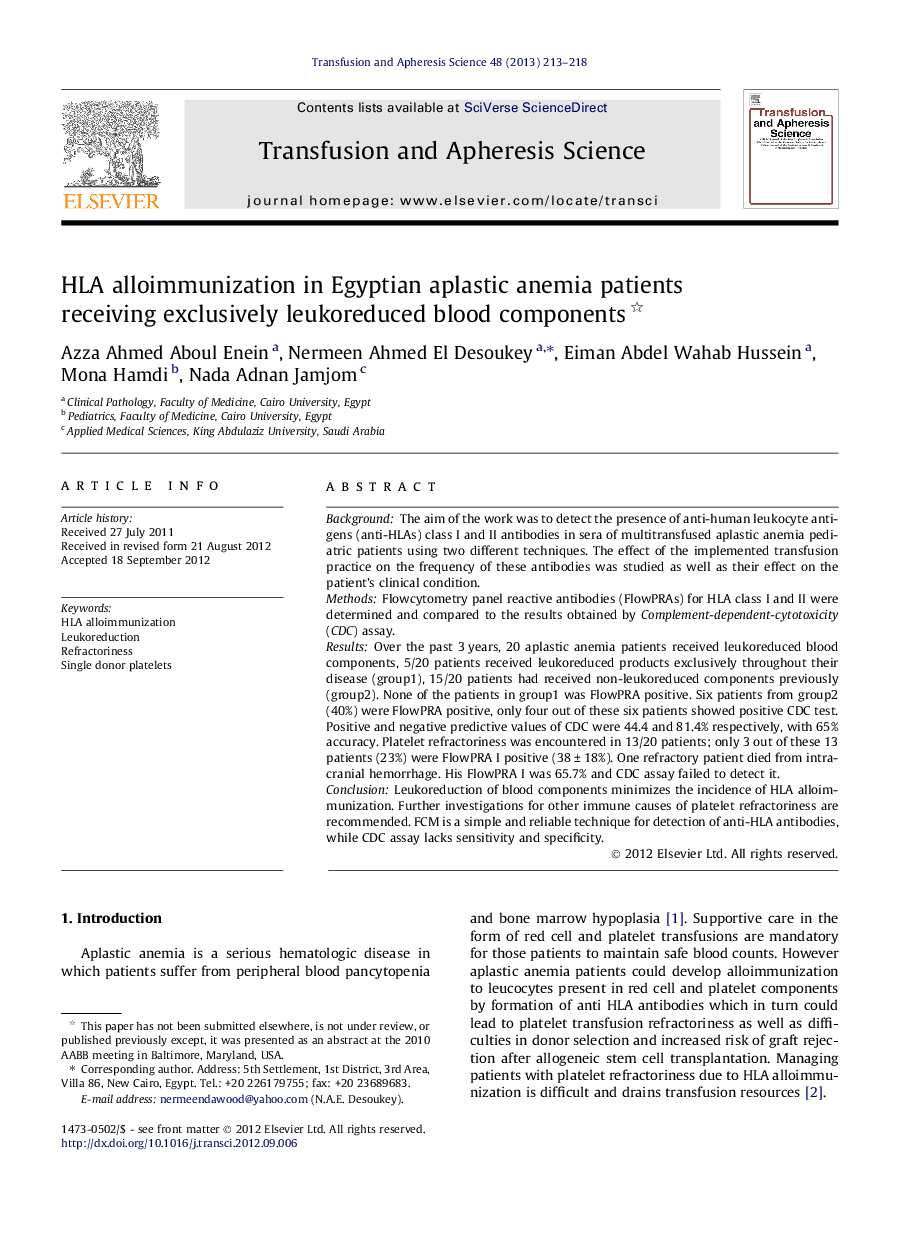| Article ID | Journal | Published Year | Pages | File Type |
|---|---|---|---|---|
| 3335557 | Transfusion and Apheresis Science | 2013 | 6 Pages |
BackgroundThe aim of the work was to detect the presence of anti-human leukocyte antigens (anti-HLAs) class I and II antibodies in sera of multitransfused aplastic anemia pediatric patients using two different techniques. The effect of the implemented transfusion practice on the frequency of these antibodies was studied as well as their effect on the patient’s clinical condition.MethodsFlowcytometry panel reactive antibodies (FlowPRAs) for HLA class I and II were determined and compared to the results obtained by Complement-dependent-cytotoxicity (CDC) assay.ResultsOver the past 3 years, 20 aplastic anemia patients received leukoreduced blood components, 5/20 patients received leukoreduced products exclusively throughout their disease (group1), 15/20 patients had received non-leukoreduced components previously (group2). None of the patients in group1 was FlowPRA positive. Six patients from group2 (40%) were FlowPRA positive, only four out of these six patients showed positive CDC test. Positive and negative predictive values of CDC were 44.4 and 81.4% respectively, with 65% accuracy. Platelet refractoriness was encountered in 13/20 patients; only 3 out of these 13 patients (23%) were FlowPRA I positive (38 ± 18%). One refractory patient died from intracranial hemorrhage. His FlowPRA I was 65.7% and CDC assay failed to detect it.ConclusionLeukoreduction of blood components minimizes the incidence of HLA alloimmunization. Further investigations for other immune causes of platelet refractoriness are recommended. FCM is a simple and reliable technique for detection of anti-HLA antibodies, while CDC assay lacks sensitivity and specificity.
